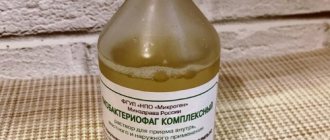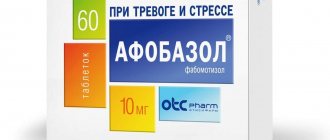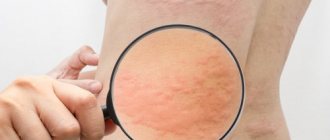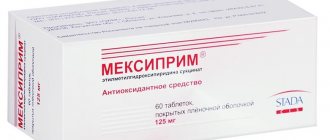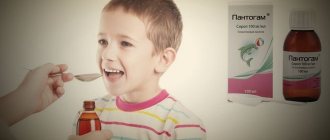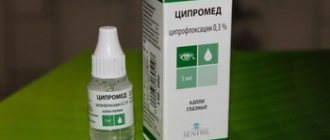Diseases caused by bacterial infections can affect anyone, almost anywhere. Treatment of such problems is always complex. In recent years, bacteriophages have become the main component of therapy. These are specific viruses that destroy pathogenic bacteria. The use of drugs in this group has made it possible to advance in the treatment of many infectious diseases. The main thing is to accurately diagnose the type of pathogenic bacteria in order to select a bacteriophage suitable for therapy.
Release forms and composition of the drug
This drug is produced in the form of a clear medicinal solution. It is distinguished by its versatility of use: the medication can be taken internally and applied externally. Pyobacteriophage complex is a liquid with shades of varying saturation. A yellow or greenish color of the solution is considered normal.
The drug is sold in bottles of different sizes - 20 ml and 100 ml. Each cardboard pack contains 8 bottles of smaller volume or 1 larger one. The concentration of active ingredients in 1 ml of medicine does not depend on the volume of the bottle.
Each drop of solution contains filtrates of phagolysates of bacteria of the following strains:
- staphylococcal;
- streptococcal;
- enteropathogenic (Escherichia coli, Proteus);
- Klebsiella;
- Pseudomonas aeruginosa.
Pyobacteriophage is a complex of lysis products of a liquid bacterial culture affected by the bacteriophage. This is a kind of mixture of components of bacterial cells and a nutrient medium containing particles of bacteriophages.
Phagolysates are created by suspension, purification and sterilization. Some scientists are confident that it is bacteriophages that have a huge impact on the process of formation of human immunity.
Auxiliary components of Pyobacteriophage include preservatives, 8-hydroxyquinoline sulfate.
Price of Pyobacteriophage
The cost of the drug is relatively high, but it is justified by the therapeutic effect of the drug. The price range for Moscow is shown in the table:
| Name of the organization | Price, rubles | |
| 20 ml | 100 ml | |
| ElixirPharm | 840 | 940 |
| Online pharmacy "Dialogue" | 623 | 718 |
| Pharmacy chain "36.6" | 674 | 784 |
| Samon-Pharma | 676 | 787 |
| eApteka.ru | 692 | 773 |
| "Rigla" | 720 | 795 |
| "Neopharm" | 809 | 928 |
| "ZdravZona" | 730 | 845 |
Pharmacological properties
The word “bacteriophage” translated from Greek means “destruction of bacteria.” In modern medicine, this term refers to a family of individual viruses that can affect certain representatives of the microflora. In the treatment of infectious diseases, phages are used that live in the habitat familiar to humans (in water, soil, on the surfaces of objects).
The therapeutic properties of bacteriophages allow them to compete with antibacterial drugs.
Compared to antibiotics, Pyobacteriophage:
- has a targeted effect, destroying exclusively the causative agent of the disease, and not the beneficial microflora;
- does not suppress the immune system;
- demonstrates good results in the treatment of indolent protracted diseases of bacterial etiology with high resistance.
The bacteriophages used in the manufacture of this drug are essentially parasites. Viruses invade a microbial cell and use its structures and reserves for their own growth, nutrition, and reproduction. Interestingly, each bacteriophage has exclusively genetic material coated with a protein coat.
Each type of bacteriophage affects certain bacteria, therefore the Pyobacteriophage contains phagolysates of several strains. Thanks to this, the drug is effective against various pathogens.
Pyobacteriophage complex, reviews of which are controversial, can be used in combination with antibiotics and is not addictive.
Pharmacodynamics and pharmacokinetics
This drug starts the process of lysis of pathogenic microorganisms. Pyobacteriophage penetrates the microbial cell and after some time dissolves it, thereby completely destroying it.
The beginning of the destructive work of the bacteriophage is considered to be the moment its genetic information is injected into the body of the bacterium, after which the amount of the “medicinal” virus begins to actively increase.
As soon as the membranes of bacterial cells begin to collapse, up to 200 bacteriophages are released from the lysed membrane and continue the process of destroying neighboring pathogenic bacteria. Thus, Pyobacteriophage continues to act until all infectious agents in the body are neutralized.
Indications for use
Pathological conditions that develop due to bacterial infection require complex therapy. If several decades ago there was only one solution to such problems - taking antibiotics, today bacteriophages are increasingly used in the treatment of infectious diseases.
It is important to understand that their use will become effective provided that the subspecies and strain of the bacterial pathogen are accurately determined.
The annotation for Pyobacteriophage notes that it can be used for the treatment and prevention of purulent-inflammatory diseases in the gastrointestinal tract, provoked by staphylococcal, streptococcal microorganisms, as well as enterococci, Klebsiella, Pseudomonas aeruginosa, Proteus and other enterobacteria.
In this regard, the main indications for the use of Piobacteriophage are:
- dysbacteriosis;
- food poisoning;
- gastroenterocolitis of various etiologies;
- inflammation of the gallbladder.
In addition to problems in the digestive organs, bacteriophages are intended for patients with respiratory diseases, otitis media, and sinusitis. For laryngitis, pharyngitis, and sore throat, Piobacteriophage is used as monotherapy.
The effectiveness of this product has been proven by numerous responses from patients: the drug shows good results for urinary tract infections, inflammatory and bacterial lesions of the pelvic organs. There is also information about the use of Pyobacteriophage for post-traumatic complications of the conjunctiva, sclera or cornea.
Pyobacteriophage complex (user reviews about the drug cannot be considered a recommendation for use) should only be prescribed by a specialist.
This remedy is used in the treatment of infectious diseases requiring surgical intervention:
- carbunculosis;
- abscess;
- furunculosis;
- phlegmon;
- panaritiums.
If a bacterial pathogen is attached to burns or wounds, you can also try to cope with progressive inflammation using phagolysates, without antibiotics. For prophylactic purposes, the drug is prescribed to prevent nosocomial infection. Most often, wound surfaces and postoperative scars are treated with the help of Piobacteriophage.
How to use?
The dosage required in a particular case is determined only by the attending physician. It will depend on the diagnosis and the age of the patient. The method of using the medicine also depends on the type of pathological process. For purulent-inflammatory diseases, the solution is indicated to be taken orally. Local use of the drug is possible in the form of irrigation, lotions and tampons. More effective is the complex use of a polyvalent bacteriophage.
To treat pathologies of the ENT organs, the product is used for rinsing and instillation of the nasal and ear cavities. A positive result is obtained by using turundas moistened with a solution
They are inserted into the ear canals with extreme caution so as not to damage the integrity of the eardrums. The procedure is repeated at least three times a day. For tonsillitis, the medication is used to rinse the mouth.
For tonsillitis, the medication is used to rinse the mouth.
When treating diseases of the gastrointestinal tract, complex bacteriophage is taken orally. The patient is first advised to undergo a stool test, which will help determine the sensitivity of the pathogen to the active components. To treat inflammatory processes in the urinary system, a medicinal liquid is injected into the bladder using a catheter. To enhance the therapeutic effect, doctors can additionally prescribe bacteriophages in tablet form.
Contraindications
There are no absolute prohibitions on the use of this bioactive medicine. The drug Piobacteriophage should not be used only in case of individual intolerance to the substances it contains.
Restrictions on the use of the drug during pregnancy and lactation can be considered relative. Before using this product, you must consult a doctor to determine the exact dosage and duration of therapy, as well as undergo a detailed examination to identify the infectious pathogen.
Pyobacteriophage during pregnancy
During pregnancy, the bacteriophage is indicated for use in purulent and inflammatory processes. The same applies to the period of breastfeeding. Due to their specific effects, phages have a detrimental effect only on pathogenic cells, without affecting healthy ones. But without an accurate clarification of the nature of the disease, it is impossible to self-medicate. At the same time, consultation with a gynecologist or pediatrician regarding the use of bacteriophage will not be superfluous.
At what age can the drug be used?
Pyobacteriophage complex is not often used in childhood, but the drug can still be given as prescribed by the attending physician after 6 months. For children under this age, medication is prescribed only in cases of urgent need - for example, in the treatment of sepsis, enterocolitis.
As a rule, Pyobacteriophage is used as an enema for infants, but in the absence of regurgitation and comfortable tolerance, the drug can be given to the child orally.
Interestingly, it is best to give the medicine to children in the first year of life not in its pure form, but diluted with milk. At the same time, Pyobacteriophage will demonstrate better results if the rectal and oral routes of administration of the solution are combined.
For babies born prematurely, the bacteriophage is introduced into the body through a gas tube. For children, the course of treatment averages 5-15 days. In case of recurrent course of the pathology, a repeat course is possible. Pyobacteriophage is often prescribed to newborns and infants for prophylactic purposes in hospital settings.
With the help of this medicinal solution, children are treated with pyoderma and omphalitis: a gauze cloth is moistened in a medicinal liquid and applied to the affected area or umbilical wound.
Reviews
You can see a lot of good reviews about the use of “Piobacteriophages” in children. In them, parents confirm the effectiveness of the solutions when infected with staphylococcus, E. coli and other microbes. The advantages of the drugs include the possibility of treating children of any age, good tolerability and ease of dosing.
Among the disadvantages, the high price is usually mentioned, and in some reviews there are complaints about the lack of effect. In addition, when taken orally, many people note the unpleasant taste of the medicine, and giving an enema to an infant can be difficult.
Instructions for use, dosage
The scheme for using Pyobacteriophage is determined depending on the type of disease and the location of the infectious focus.
The medicinal solution can be used in 3 main ways:
- drink pure or diluted;
- do enemas;
- use as lotions, compresses, rinses.
If necessary, the drug is administered both rectally and orally at the same time. For example, for dysbiosis, acute intestinal infections or other gastrointestinal diseases, Piobacteriophage can be administered orally 3 times a day 1 hour before meals, and in complicated cases - in parallel with enemas.
The dosage of the drug is determined individually by the doctor, based on the manufacturer’s recommendations:
| Patient age | Maximum single dose (ml) | |
| Oral administration | Enema | |
| 0-6 months | 5 | 10 |
| 6-12 months | 10 | 20 |
| from 1 year to 3 years | 15 | 30 |
| from 3 years to 8 years | 20 | 40 |
| from 8 years and older | 30 | 50 |
Local use
For diseases of the ENT organs, the use of turundas soaked in a solution is considered effective: they are placed in each ear or nasal passage and left for 1 hour.
Pyobacteriophage can be used for bacterial conjunctivitis by instillation. The instructions for use indicate the optimal dosage regimen: 2-3 drops 4-5 times during the day in each eye. The same treatment regimen is also suitable for keratoconjunctivitis.
For patients with a purulent corneal ulcer or purulent iridocyclitis, the single dose after consultation with a doctor is increased by 2-3 times, and the frequency of use is increased to 8 times a day.
Open wounds can be irrigated with Pyobacteriophage complex, lotions can be made, or tampons can be placed, determining the amount of the drug based on the size of the affected area. For abscesses, the solution is injected directly into the cavity of the lesion, after which the pus is removed from it.
The maximum volume of the drug used for 1 procedure is 200 ml. For osteomyelitis, 10-20 ml of Piobacteriophage is poured into the wounds after preliminary antiseptic treatment.
As a solution for external use, the drug is prescribed for various chronic diseases of the oral cavity, including periodontitis and gingivitis.
Pyobacteriophage is used for rinsing: the procedure is carried out after brushing your teeth 3-4 times a day, spending an average of 20 ml of liquid. Another way to use a bacteriophage is to introduce drug-impregnated turundas into periodontal pockets.
For bacterial infections of the vagina and uterus, similar manipulations are performed using Piobacteriophage. In specialized conditions, the drug can be administered into the cavity of the renal pelvis or bladder using drainage devices (nephrostomy, cystostomy).
Enemas
The introduction of Pyobacteriophage solution into the rectum using an enema is recommended for food poisoning and acute conditions caused by certain groups of enterobacteria.
Moreover, bacteriophages must be used using a so-called “high” enema - this is a manipulation that operates on the principle of communicating vessels, and is especially effective for intestinal obstruction and increased gas formation in children 1 year of age.
Pyobacteriophage complex is administered after preliminary cleansing of the intestines. According to reviews, the procedure does not cause pain or discomfort. In order for the solution to reach as far as possible, the tube with the tip must be inserted to a depth of at least 30-40 cm.
Nose drops
In the treatment of inflammatory and purulent sinus infections, doctors are increasingly moving away from using antibiotics. Bacteriophages are used for instillation, washing, and irrigation of disease foci.
For sinusitis, therapeutic applications are used: cotton swabs are soaked in a Piobacteriophage solution and placed in each nasal passage for 30-60 minutes. This method is suitable for the treatment of rhinitis and the prevention of complications due to ARVI.
Purulent-inflammatory localized lesions are treated systemically. The patient is prescribed Pyobacteriophage orally and in parallel as a local drug. Unlike antibiotics, this remedy can be used for a longer period. On average, the course of treatment with bacteriophages lasts 10-20 days.
Symptoms of dorsopathy in a child
- Pain in the back (spine), often aching, pulling, less often shooting in nature. It can occur in any part of the spine (neck, lower back, thoracic region). It increases with loads (especially when lifting heavy objects), decreases in a lying position (as the spine is “unloaded”).
- A feeling of tension in a muscle in the back, defined as a “tense roll” (myotonic syndrome): when palpating (probing) this muscle, the pain increases sharply, which sometimes makes the patient scream.
- Limitation of mobility of the affected part of the spine: occurs due to sharp pain, intensifying with rotation of the spine and tension of its axial (located along the spine) muscles.
- Tingling, and after a certain time, numbness of the skin of the extremities: on the arms, for example, from the shoulder to the hand, on the legs from the groin to the knee. There may also be aching, nagging pain in the limbs.
- Weakness of the muscles of the extremities: a certain group of muscles is more often affected (for example, flexors of the arm or extensors of the fingers, big toes).
- Thinning of the muscles of the arms and legs (amyotrophy), dry skin of the hands and feet.
Side effects
There is insufficient information about confirmed cases of adverse reactions. It is known that the drug extremely rarely causes symptoms of individual intolerance. Moreover, an allergy can be triggered by any of the components in the product. Patients who are not suitable for Pyobacteriophage may experience nausea, dizziness, and weakness.
The likelihood of side effects occurring is higher for those users who neglect the rules or shelf life of the medicine, or ignore the manufacturer’s recommendations in the instructions for use.
Overdose
Pyobacteriophage complex, reviews of which are studied by most patients on the eve of treatment, is not dangerous if the dosage prescribed by the doctor is exceeded. This drug does not have a negative effect on human health. There is no information about changes in condition due to excessive consumption of the drug in the annotation.
Pyobacteriophage complex
However, adherence to accurate dosage calculations will save your budget. With intensive use, the consumption of the drug increases, which means that in cases where 1 package would be enough, you will have to purchase another one. Considering the low cost of the bacteriophage, an additional purchase may disrupt existing plans.
special instructions
Of great importance in the dynamics of recovery will be the fact whether a test for the phage sensitivity of the pathogen to the drug was previously carried out.
If the pathogen is resistant to the effects of these bacteriophages, the use of the drug will not bring the expected results. Resistance to the components of Pyobacteriophage can develop after prolonged use.
Before each dose of the medicine, the bottle of liquid should be shaken thoroughly. The presence of sediment, color change, and cloudiness of the solution indicate the loss of its medicinal properties and future uselessness. Bacteria that enter the container from the outside quickly multiply in a favorable nutrient medium, disturbing the balance of bacteriophages.
To prevent this, when opening the bottle, you must follow the following basic rules:
- Before opening the bottle, you must treat your hands with an antiseptic and wash them with soap.
- Before opening the bottle, you need to disinfect the stopper and protective cap.
- After processing, the lid should not be placed with the inside facing the surfaces.
The bottle should not be left open for a long time. After opening, Pyobacteriophage can only be stored in the refrigerator. To mark the required amount of medication, you will need a regular syringe of any volume: you should pierce the stopper with the syringe needle, and then, through the resulting hole, you need to draw the solution.
Drug interactions
Most bacteriophages can be used in combination with antibacterial medications. Researchers have been able to prove that phages effectively enhance the effect of antimicrobial agents, provided that the pathogen is correctly identified.
If Pyobacteriophage is used externally after antiseptics of chemical origin, between these drugs and the bacteriophage it is necessary to wash the wound with a regular 0.9% saline solution. Treatment with viruses does not eliminate the need to use traditional antibacterial compounds.
There is minimal information about the effect of ethyl alcohol on the properties of the drug, since studies of this kind have simply not been conducted. However, to be confident in the results of treatment, doctors advise stopping drinking alcoholic beverages for a while.
By the way, alcohol is not compatible with most modern antibacterial substances used in the complex treatment of infections.
Physiological hyperemia
Excessive blood flow is caused by external or internal factors not related to disease:
- prolonged exposure to the sun or wind;
- the effect of cold;
- strong emotions - anger, shame, excitement, excitement, and so on. Experiences require increased blood flow to the brain, which causes redness in the face;
- hormonal changes that occur during pregnancy, breastfeeding, and menopause. This is a natural phenomenon, although it can also transform into a painful form;
- physical activity - running, jumping, swimming, hard work and so on.
A distinctive feature of physiological hyperemia is the short duration and obviousness of the cause. In relation to the nature of the factors that provoke blood flow, two forms are distinguished.
- Working - or functional. This is the flow of blood to the organ, accompanied by an increase in its function. For example, muscle hyperemia during contractions - physical activity, or blood flow to the pancreas during the digestion of food. The latter, of course, does not appear outwardly. Emotional or mental stress causes working hyperemia of the brain.
- Reactive – blood flow to the organ after a short-term restriction. Observed in the kidneys, brain, muscles. In this way, a kind of oxygen debt resulting from the cessation of blood flow is compensated. A typical example is the filling of a limb with blood after being in an uncomfortable position.
Analogs
Pyobacteriophage complex (reviews of the drug are often left by doctors and experienced doctors) has many analogues. Some of the bacteriophages have a composition almost identical to this drug. The most popular substitutes
Pyobacteriophage can be considered products with the following trade names:
- Sextaphage polyvalent – has the same composition, specifically dissolves pathogens, the price per package starts from 750 rubles;
- Piopolyphage - has an immunostimulating effect, but unlike Piobacteriophage, does not contain enterococcus phagolysate (costs about 800 rubles);
- Intesti-bacteriophage is an absolute analogue of the domestic manufacturer, affecting a number of bacterial strains and not causing side effects (price - from 730 rubles).
All of these mixtures of phagolysate filtrates serve as worthy alternatives to antibiotics. Especially often, such drugs are used to treat diseases of the upper respiratory tract and ENT organs in children. Unlike antibacterial agents, Pyobacteriophage and its analogues do not disrupt the beneficial intestinal microflora and are harmless even when taken in large doses.
What are bacteriophages?
Each ailment needs specific treatment
To choose the right method of therapy, it is important to determine the type of pathogen. To combat bacterial pathologies that are characterized by severe course and consequences, doctors often prescribe bacteriophages. These drugs are viruses beneficial to the human body that use harmful bacteria to reproduce and continue their life activity.
Moreover, they have a negative effect only on pathogenic microorganisms and do not affect the functioning of organs and systems
These drugs are viruses beneficial to the human body that use harmful bacteria to reproduce and continue their life activity. Moreover, they have a negative effect only on pathogenic microorganisms and do not affect the functioning of organs and systems.
Unlike antibiotics, bacteriophages do not destroy beneficial microflora and do not cause the development of dysbacteriosis. The drugs can be taken on a long-term basis and not be afraid of the emergence of resistance of pathogenic microorganisms to the active ingredients.
In pediatric practice, polyvalent bacteriophage is often used. Reviews (for children the medicine is prescribed after diagnosis) from specialists confirm the effectiveness of the drug, provided that the type of pathogen is accurately determined. To do this, before starting therapy, it is necessary to undergo laboratory diagnostics. Bacteriophages are considered to be as powerful drugs as antibiotics.
Terms, conditions of sale and storage
The shelf life of Pyobacteriophage depends on the conditions under which the drug will be stored. From the date of issue, the medicine remains valid for 2 years, but only if it is kept in a dry place, protected from light and children.
Observance of the temperature regime is also important: the drug retains its medicinal properties from +2 to +10 °C. After the expiration date, the medicinal solution must be disposed of. An expired bacteriophage is not dangerous to health, but it will also not be able to have any beneficial effect.
